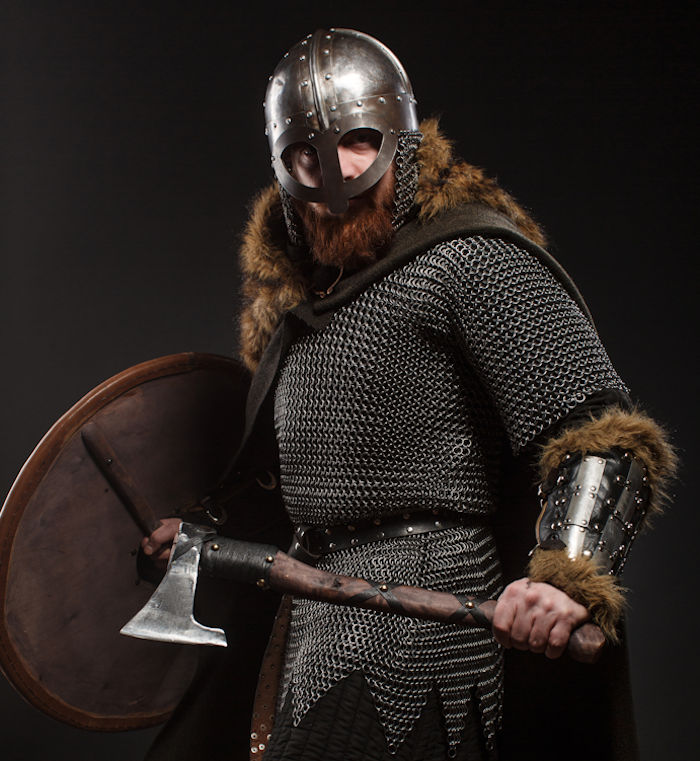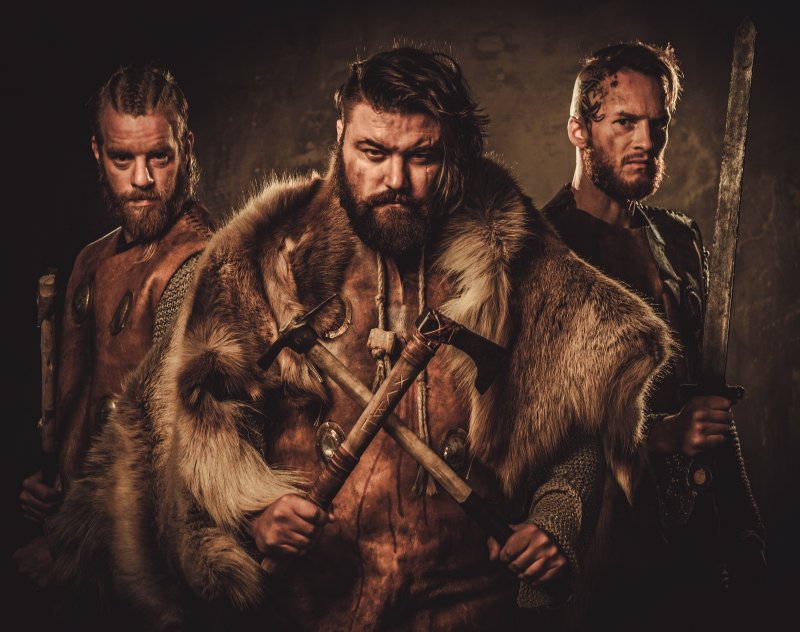Hird – Viking Warriors And Professional Body Guards Prepared To Die For Their Leader
Ellen Lloyd - AncientPages.com - An influential Viking chief had many enemies lurking everywhere. To stay in power, he had to be protected. A hird consisted of hired professional warriors who guaranteed their leader's safety day and night.
They were greatly rewarded for their services and lived a life many young men could only envy.
Becoming a Hirdman was an honor. Credit: Adobe Stock - fotokvadrat
Many young Vikings dreamt about an adventurous life, and being chosen to a hird was a great honor. A young Viking had to distinguish himself because Viking chiefs selected the most skilled warriors and only those from influential families.
Being good in battle was no guarantee that a Viking could serve in a hird.
The word hird itself stems from the Anglo-Saxon word hîred, which means a 'family' or 'household.'
Hirdman was a member of a Hird household family. Viking leaders had warriors in service from ancient times.
At the beginning of the Viking Age, a hird was like a war band, but around the time of the early Viking voyages, the term referred to a more unified group of bodyguards who traveled with their leader and protected him. A hird could be made up of 60 Viking warriors. Although any free man could assemble a hird, the truth is that only the most powerful chiefs and kings could afford the luxury of personal bodyguards.
Norse warriors did not fight for free. Their services were costly, and their payment came in gifts such as gold and silver, clothes, and weapons.
Warriors also needed proper accommodation, food, and drink to protect their leader all around the clock.
The leader fought for victory in a battle, and the warriors fought for the leader.
Becoming a member of a hird meant that warriors swore an oath to fight and defend their leader at any time.
They also had to hand over plundered treasures to their leader, who gave them some of the booties. Any member of the hird had to avenge their leader's death if necessary.
Bonds between hirdmen were strong and they saw themselves as a warrior brotherhood. Credit: Adobe Stock - Nejron Photo
Of course, Viking chiefs did more than engage in battles. A hird had to follow their leader to meetings with other chiefs and participate in many journeys. In those days, it was undoubtedly a desirable profession.
Once a Hirdman finished his duty, he was given a bit of land and property from the leader he had served faithfully.
A hird should not be confused with the Varangian Guard, which also consisted of hired professional Viking warriors. As we discussed on Ancient Pages before, However, the Varangian Guard represented the elite heavy infantry regiment of the Roman ('Byzantine') Empire from AD 988 AD to around 1404 AD. the Varangian Guard also employed warriors who successfully conquered territories.
It's also worth mentioning that members of a hird shared a unique and strong bond. They perceived themselves as brothers, just like the fearsome Jomsvikings – a mysterious Scandinavian warrior-brotherhood.
Updated on October 1, 2022
Written by - Ellen Lloyd – AncientPages.com
Copyright © AncientPages.com All rights reserved. This material may not be published, broadcast, rewritten or redistributed in whole or part without the express written permission of AncientPages.com
Expand for referencesReferences:
Anette Tamm - Vikingar: kring hem och härd
Lars Magnar Enoksen - Vikingarnas stridskonst
Hans H Lundqvist - Vikingarnas ursprung
More From Ancient Pages
-
 Ancient DNA Unravels The Mystery Of Huge 6,500-Year-Old Cemetery And The Tomb Of A ‘Masculine Woman’ In Normandy, France
Archaeology | May 5, 2022
Ancient DNA Unravels The Mystery Of Huge 6,500-Year-Old Cemetery And The Tomb Of A ‘Masculine Woman’ In Normandy, France
Archaeology | May 5, 2022 -
 On This Day In History: Sweden’s Greatest Defeat: Battle Of Kirchholm Was Fought – On Sep 27, 1605
News | Sep 27, 2016
On This Day In History: Sweden’s Greatest Defeat: Battle Of Kirchholm Was Fought – On Sep 27, 1605
News | Sep 27, 2016 -
 Evidence The Khufu Channel Aided The Construction Of The Giza Pyramids Found – Scientists Say
Archaeology | Aug 31, 2022
Evidence The Khufu Channel Aided The Construction Of The Giza Pyramids Found – Scientists Say
Archaeology | Aug 31, 2022 -
 Strange Ancient Labyrinth City Under The Sands Of The Kara Kum Desert Reveals Its Secrets
Ancient Mysteries | Sep 29, 2014
Strange Ancient Labyrinth City Under The Sands Of The Kara Kum Desert Reveals Its Secrets
Ancient Mysteries | Sep 29, 2014 -
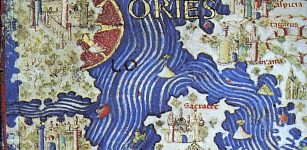 Fra Mauro Medieval Map: Accurate And Detailed Work Attesting To Advanced Geographic Knowledge Of Contemporary Cartographers
Artifacts | Feb 8, 2019
Fra Mauro Medieval Map: Accurate And Detailed Work Attesting To Advanced Geographic Knowledge Of Contemporary Cartographers
Artifacts | Feb 8, 2019 -
 On This Day In History: Sir Thomas Brisbane, Astronomer, Soldier And Governor Was Born – On July 23, 1773
On This Day In History | Jul 23, 2016
On This Day In History: Sir Thomas Brisbane, Astronomer, Soldier And Governor Was Born – On July 23, 1773
On This Day In History | Jul 23, 2016 -
 How Did People Go To The Toilet In The Past Before The Invention Of The Flush Toilet?
Archaeology | Jun 10, 2023
How Did People Go To The Toilet In The Past Before The Invention Of The Flush Toilet?
Archaeology | Jun 10, 2023 -
 Ancient Wall Of Lolei Temple Built In 893 BC Unearthed In Siem Reap, Cambodia
Archaeology | Apr 20, 2020
Ancient Wall Of Lolei Temple Built In 893 BC Unearthed In Siem Reap, Cambodia
Archaeology | Apr 20, 2020 -
 On This Day In History: Gottfried Wilhelm von Leibniz – Famous Philosopher, Scientist And Mathematician Died – On Nov 14, 1716
News | Nov 14, 2016
On This Day In History: Gottfried Wilhelm von Leibniz – Famous Philosopher, Scientist And Mathematician Died – On Nov 14, 1716
News | Nov 14, 2016 -
 Harappan Civilization Built Massive Protection Walls Against Tsunami 5,000 Years Ago
Archaeology | Jan 10, 2017
Harappan Civilization Built Massive Protection Walls Against Tsunami 5,000 Years Ago
Archaeology | Jan 10, 2017 -
 World’s Oldest Tattoos Discovered On Egyptian Mummies Re-Write History Of Tattoos
Archaeology | Mar 2, 2018
World’s Oldest Tattoos Discovered On Egyptian Mummies Re-Write History Of Tattoos
Archaeology | Mar 2, 2018 -
 Never-Before-Seen Ancient Frescoes Discovered Inside The Dormition Cathedral
Archaeology | Feb 28, 2020
Never-Before-Seen Ancient Frescoes Discovered Inside The Dormition Cathedral
Archaeology | Feb 28, 2020 -
 5 Most Common Misunderstandings About Evolution
Evolution | Jun 5, 2023
5 Most Common Misunderstandings About Evolution
Evolution | Jun 5, 2023 -
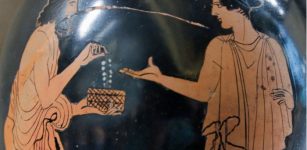 Necklace Of Harmony – Powerful Ill-Fated Piece Of Jewelry With Curse
Featured Stories | Jul 3, 2021
Necklace Of Harmony – Powerful Ill-Fated Piece Of Jewelry With Curse
Featured Stories | Jul 3, 2021 -
 Brochs: Ingeniously Engineered Windowless Iron Age Structures Of Atlantic Scotland
Featured Stories | Sep 20, 2023
Brochs: Ingeniously Engineered Windowless Iron Age Structures Of Atlantic Scotland
Featured Stories | Sep 20, 2023 -
 Runes: Facts And History About Odin’s Secret Language
Ancient History Facts | Jan 27, 2016
Runes: Facts And History About Odin’s Secret Language
Ancient History Facts | Jan 27, 2016 -
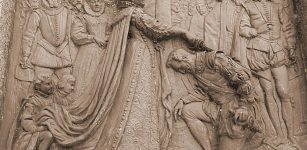 On This Day In History: Francis Drake Was Knighted After He Completed A Circumnavigation Of The World – On Apr 4, 1581
News | Apr 4, 2016
On This Day In History: Francis Drake Was Knighted After He Completed A Circumnavigation Of The World – On Apr 4, 1581
News | Apr 4, 2016 -
 Jamukha: Mongolian Leader, Military And Childhood Friend Of Genghis Khan But Not Forever
Featured Stories | May 8, 2019
Jamukha: Mongolian Leader, Military And Childhood Friend Of Genghis Khan But Not Forever
Featured Stories | May 8, 2019 -
 Forseti: Norse God Of Justice And Lawmaker Who Lived In A Shining House
Featured Stories | May 1, 2016
Forseti: Norse God Of Justice And Lawmaker Who Lived In A Shining House
Featured Stories | May 1, 2016 -
 Hidden Silver Casket With Bones Of 13th Century Saint Found
Archaeology | Mar 22, 2020
Hidden Silver Casket With Bones Of 13th Century Saint Found
Archaeology | Mar 22, 2020

